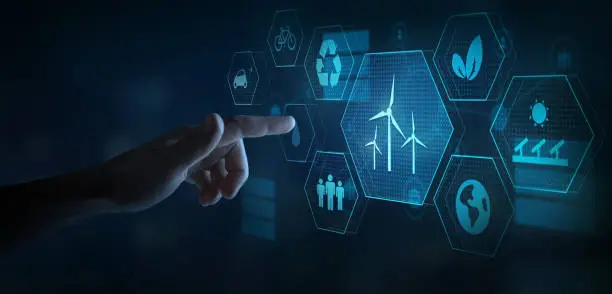Renewable energy isn’t just the future—it’s happening right now. And the exciting part? Technology is speeding up the shift in ways you might not expect. From solar cells that bend to floating wind farms at sea, these innovations are transforming how we capture and use clean energy. Let’s dive deep into the latest breakthroughs in renewable energy technologies that everyone should know about.
Introduction to Renewable Energy
What is Renewable Energy?
Renewable energy comes from natural sources that replenish themselves—think sunlight, wind, water, and even heat from the Earth. Unlike fossil fuels, which run out and cause pollution, renewable energy is sustainable and cleaner for our planet.
Importance of Innovation in Renewable Energy
Why do innovations matter? Because scaling renewables efficiently means beating costs, improving storage, and making energy accessible everywhere. New technologies don’t just add cool features; they solve real problems like intermittency and grid integration, driving the energy revolution forward.
Solar Energy Innovations
Perovskite Solar Cells: The Next Big Leap
Perovskite solar cells are shaking up the solar industry. Unlike traditional silicon panels, these cells are lightweight, flexible, and cheaper to produce. Their efficiency has soared to over 25% in labs, rivaling silicon. Imagine solar panels on your windows or even clothes—that’s the potential!
Solar Tracking Systems: Following the Sun
Solar tracking systems use sensors and motors to follow the sun’s path, maximizing energy capture. This innovation boosts solar farm output by up to 30%. It’s like having solar panels with a brain, always adjusting for the best sunlight.
Wind Energy Advances
Floating Offshore Wind Turbines
Traditional offshore wind farms sit near coasts, but floating turbines are game-changers. They can be placed far out at sea, where winds are stronger and more consistent. This opens vast new areas for wind energy without disturbing marine ecosystems near shorelines.
Smart Wind Farms with AI
Smart wind farms use AI to optimize turbine placement, operation, and maintenance. Sensors monitor conditions in real-time, predicting faults before they happen. This increases efficiency and reduces downtime, making wind power more reliable.
Energy Storage Breakthroughs
Solid-State Batteries: Safer and More Efficient
Energy storage is a crucial bottleneck for renewables. Solid-state batteries replace the liquid electrolyte with a solid one, boosting energy density and safety. Tesla and other innovators are racing to bring these batteries to market for electric vehicles and grid storage.
Grid-Scale Storage Solutions
Massive storage solutions like pumped hydro, compressed air, and flow batteries are stabilizing grids globally. These systems store surplus energy and release it during demand peaks, smoothing out renewable energy’s ups and downs.
Bioenergy and Biofuels
Algae-Based Biofuels
Algae grow quickly and absorb CO2, making them an ideal source for biofuels. Recent breakthroughs allow algae to produce bio-oil efficiently, offering a sustainable alternative to fossil fuels for aviation and shipping industries.
Waste-to-Energy Technologies
Innovations are turning organic waste into electricity or fuel through processes like anaerobic digestion and gasification. This reduces landfill use and creates renewable energy from materials that would otherwise decompose.
Hydropower Technologies
Small Modular Hydropower Plants
Instead of large dams, small modular hydropower plants offer flexible, low-impact energy generation for communities. These can be deployed in rivers and canals without significant environmental disruption.
Underwater Turbines
Tidal and river currents are powerful energy sources. Underwater turbines, similar to wind turbines but submerged, harness this flow quietly and continuously, providing predictable renewable energy.
Geothermal Energy Enhancements
Enhanced Geothermal Systems (EGS)
EGS technologies improve geothermal power by creating artificial reservoirs underground. This expands geothermal energy access to regions without natural hot springs, making geothermal a more widely available energy source.
Hybrid Geothermal Plants
Combining geothermal with solar or biomass energy creates hybrid plants that provide steady power output and optimize resource use, overcoming geothermal’s limitations during peak demand.
Green Hydrogen Development
Electrolyzer Technology Improvements
Green hydrogen is made by splitting water using renewable electricity. New electrolyzers are becoming more efficient and cheaper, paving the way for hydrogen to become a key clean fuel for industries and transport.
Hydrogen Storage and Transport
Storing and moving hydrogen safely is a challenge. Innovations in compressed and liquefied hydrogen storage, along with pipeline infrastructure, are crucial to building a hydrogen economy.
Smart Grids and Energy Management
AI-Powered Grid Optimization
Smart grids use AI and machine learning to balance supply and demand dynamically. This reduces waste, prevents blackouts, and integrates diverse renewable sources seamlessly.
Demand Response Systems
These systems incentivize consumers to shift electricity use to off-peak times, helping stabilize the grid and maximizing the use of renewables.
Emerging Renewable Tech Trends
Ocean Thermal Energy Conversion
This tech uses temperature differences between ocean layers to generate electricity—a steady, renewable source that’s just starting to be tapped.
Space-Based Solar Power
Though futuristic, space-based solar power involves satellites collecting solar energy in space and beaming it down. It promises 24/7 solar energy free from weather or day/night cycles.
Government and Corporate Roles
Policy Incentives
Government subsidies, tax credits, and regulations are vital to accelerating renewable tech adoption worldwide. Programs like the U.S. Inflation Reduction Act have funneled billions into clean energy R&D.
Corporate Sustainability Goals
Big companies such as Google, Amazon, and Tesla are pushing renewable innovation through massive investments and ambitious carbon neutrality targets.
Challenges Facing Renewable Innovations
Cost Barriers
Despite progress, upfront costs and financing remain hurdles, especially for developing countries. Innovation in financing models is as important as technology itself.
Infrastructure and Scalability
Integrating new technologies into existing grids and scaling up production are complex and costly tasks that slow down adoption.
Future Prospects of Renewable Technologies
Integration with Artificial Intelligence
The future will see AI deeply embedded in energy production, storage, and consumption, making systems smarter, more autonomous, and more efficient.
Global Collaboration
International partnerships are essential to share knowledge, technology, and investments, driving innovation and fighting climate change on a global scale.
Impact on Climate Change and Society
Carbon Footprint Reduction
Innovations in renewables are the frontline defense against global warming, cutting greenhouse gas emissions drastically.
Job Creation and Economic Growth
Renewable energy sectors are creating millions of jobs worldwide and stimulating economic growth while fostering sustainable communities.
Conclusion
Renewable energy technologies are evolving faster than ever, offering exciting solutions to our planet’s energy challenges. From flexible solar cells to AI-powered wind farms and green hydrogen, these innovations hold the key to a sustainable and prosperous future. The transition to renewable energy is not just necessary—it’s happening now, and everyone can be part of the change.
Frequently Asked Questions (FAQs)
1. What is the most promising renewable energy technology today?
Solar energy innovations like perovskite solar cells show tremendous potential due to their high efficiency and low cost.
2. How do floating offshore wind turbines benefit energy production?
They access stronger winds further offshore, increasing energy output without crowding coastal areas.
3. Why is energy storage important for renewable energy?
Because renewable sources like solar and wind are intermittent, storage helps provide consistent power supply.
4. Can green hydrogen replace fossil fuels?
Green hydrogen offers a clean fuel alternative, especially for industries hard to electrify, but infrastructure needs to develop further.
5. How do smart grids improve renewable energy use?
Smart grids use AI to balance supply and demand efficiently, reducing waste and enhancing reliability.

